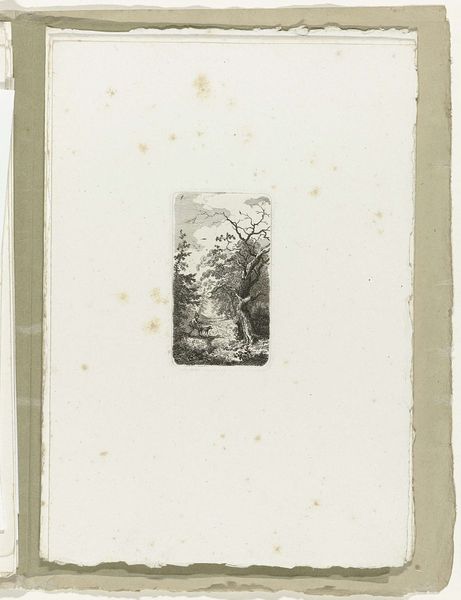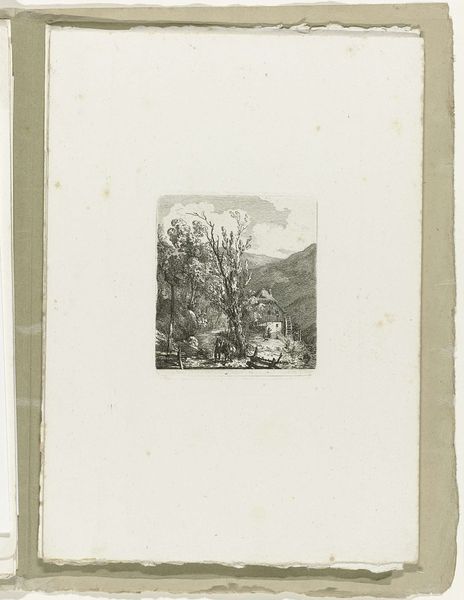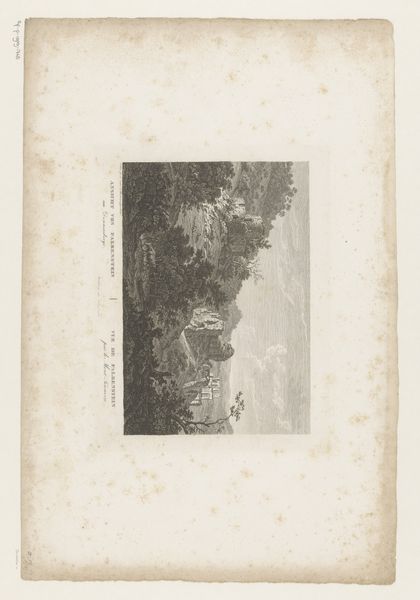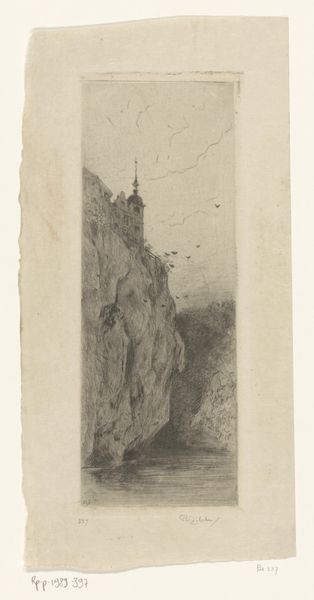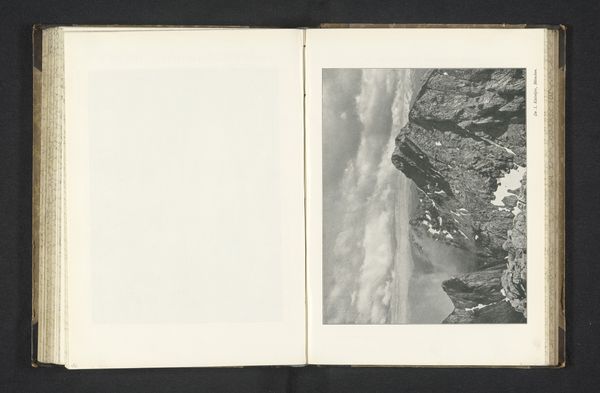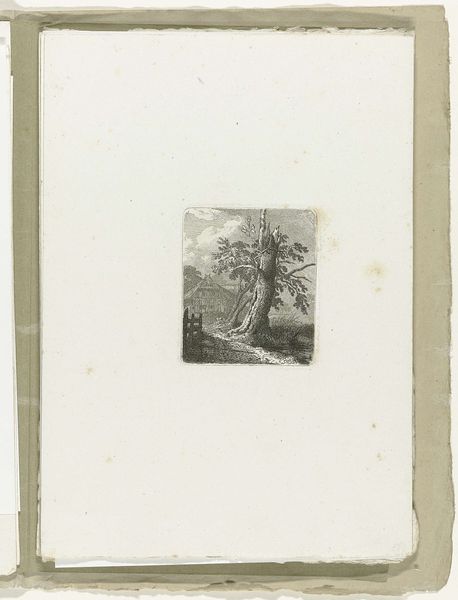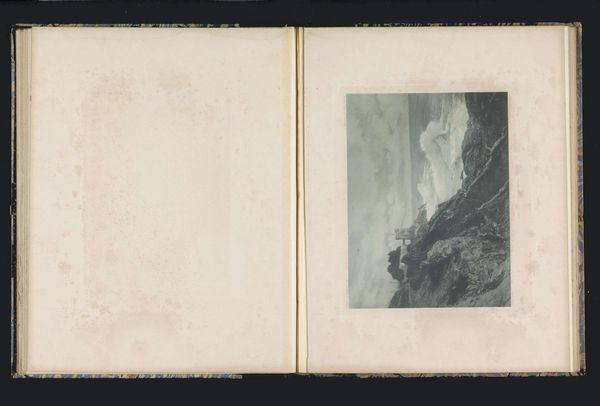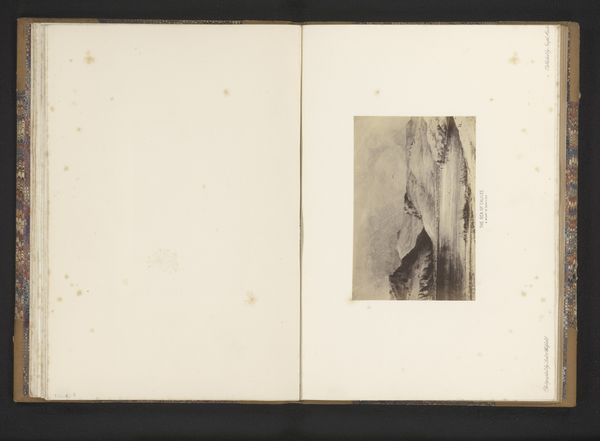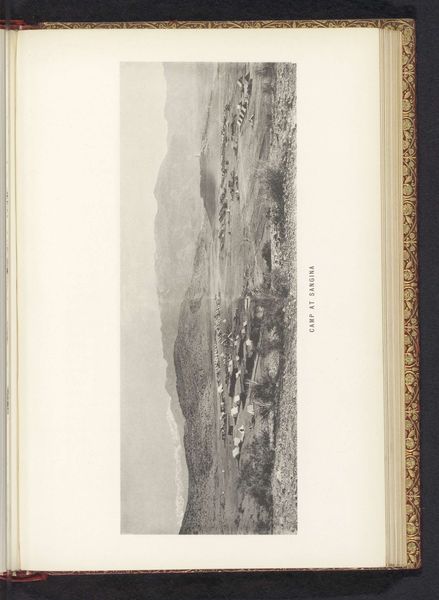
drawing, print, paper, ink, engraving
#
drawing
# print
#
landscape
#
waterfall
#
paper
#
ink
#
romanticism
#
engraving
#
watercolor
Dimensions: height 83 mm, width 69 mm, height 280 mm, width 181 mm
Copyright: Rijks Museum: Open Domain
Curator: I’m drawn to the density of detail in this small landscape print by Carl August Lebschee, made around 1827. It’s called "Waterval tussen steile rotsen," or "Waterfall between steep rocks." Editor: Immediately, the scene projects this almost gothic sensibility. It is dominated by craggy rock formations, creating an incredibly compressed visual space. The scale, for a landscape, feels very intimate, almost claustrophobic. Curator: Claustrophobia isn’t the first thing that comes to mind, but I see how the high contrast contributes to a certain dramatic tension. To me, the cascading water embodies freedom, the romantic notion of the sublime... but I also wonder if, for viewers in the 19th century, the image conjured ideas about nature’s indifference towards human endeavors. Editor: Indifference, perhaps. Yet, notice how Lebschee directs our gaze. The diagonal lines formed by the rocks force our perspective toward that distant point on the horizon, suggesting a symbolic pathway through struggle towards some ultimate realization or enlightenment. Semiotically speaking, it uses the waterfall as a signifier. Curator: The formal structure you point out brings another possibility to light – a kind of journey through self-reflection and discovery inspired by untamed natural forces. Water, historically, isn’t merely an aesthetic feature but has long been tied to themes of cleansing, renewal, and the subconscious. What’s being "washed away" in this turbulent depiction? Editor: Excellent point. It creates such an incredibly dynamic experience in two dimensions. Thinking about the use of black and white – or perhaps it would be more appropriate to note the relationship between these sharply divided masses – these contrasts produce an atmosphere that emphasizes nature’s power but does it within a constrained visual system. It's about structure shaping sensation. Curator: Absolutely. It’s easy to view Romantic landscapes solely through the lens of sentiment, but considering the underlying symbolism reveals how artists like Lebschee used landscape to ask deeper philosophical questions. Editor: Indeed. Beyond initial aesthetic judgment, a systematic interrogation reveals complex dialogues embedded within these forms.
Comments
No comments
Be the first to comment and join the conversation on the ultimate creative platform.
